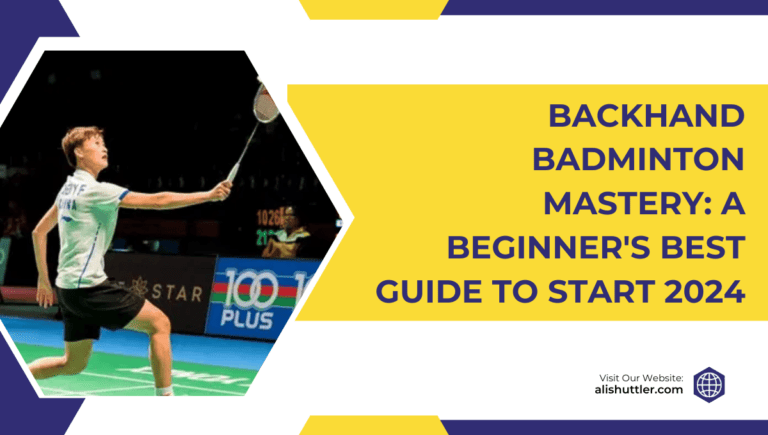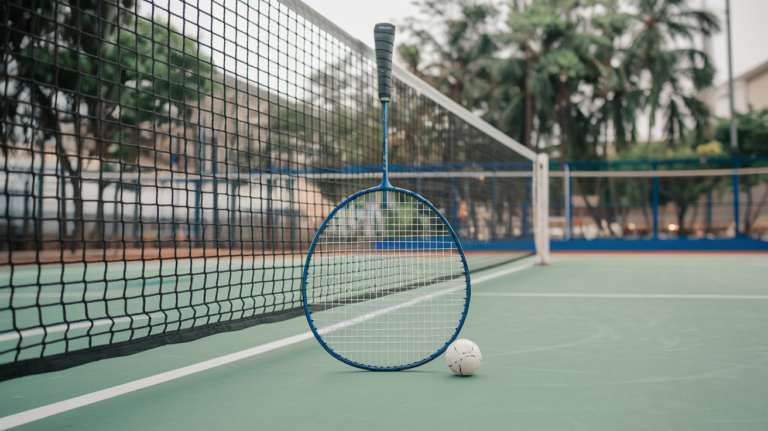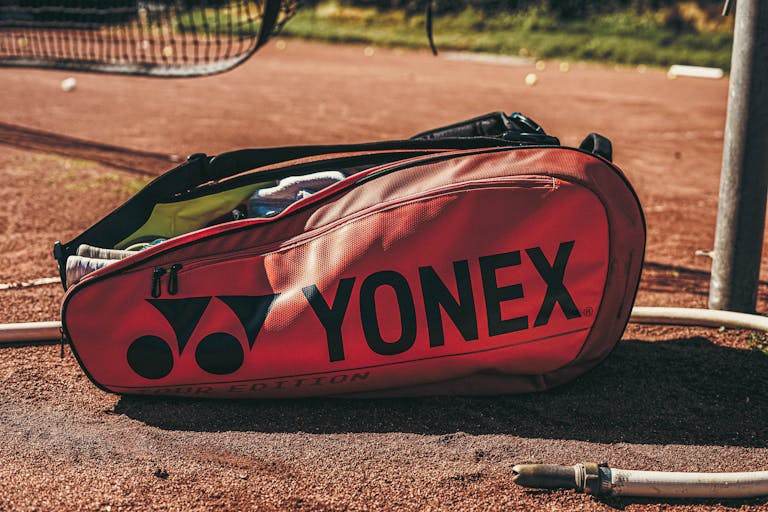li-Ning badminton rackets have a reputation for being sturdy, lightweight, and balanced. These rackets suit both novices and experienced players, providing a balance of velocity and strength.
A lot of players opt for Li-Ning badminton rackets because of its diverse line of rackets with specific characteristics, such as flexible shafts and taut string beds. In order to select the best Li-Ning racket, you need to understand the key differentiators between each model.

Below, we decompose the top picks and key specs.
Core Technologies
Li-Ning badminton rackets, known for their outstanding badminton products, combine core technologies that define play style and level of play. Each technology works in harmony, assisting badminton players in maximizing their gameplay and enhancing the usability of the right badminton racket.
- Frame innovation influences both aerodynamics and sweet spot size, which together help increase power and speed.
- Shaft dynamics govern flex, balance and feel all of which contribute significantly to shot accuracy.
- Material impacts racket weight, resiliency and durability for enduring performance.
- Balance point alters how a racket feels and maneuvers, suiting different playing requirements.
- Weight class aids in maneuverability and reduces fatigue, steering players to select by their ability and play style.
1. Frame Innovation
Frame design is a crucial factor influencing the performance of a badminton racket. The Aero Tec Beam System, for instance, is designed to minimize air drag while preserving frame stiffness, allowing the racket to cut through the air more efficiently. This is essential for players looking to enhance their game with quality badminton equipment.
The Dynamic Optimum Frame builds on this concept by creating a broader sweet spot, which increases the ease of hitting aggressive, clean shots, even when the shuttlecock doesn’t strike the center. This feature is particularly beneficial for badminton players who rely on precision.
Additionally, the 70-hole string pattern enhances string tension and response, making it easier for both power hitters and defensive players to excel in their gameplay, showcasing the versatility of the right badminton racket.
2. Shaft Dynamics
Li-Ning’s high tensile slim shaft is engineered to maintain balance and prevent twisting during powerful swings. Shaft flexibility counts as well. Soft or flexible shafts, a mainstay for certain brands, help impart power on slower swings, while stiffer shafts provide greater control on fast, incisive strokes.
The 7.0 mm diameter shaft sits somewhere in the middle, providing a nice blend of control and quickness. For more extended matches, the correct shaft can reduce fatigue, enabling players to maintain their peak form without wearing down.
3. Material Composition
Speaking of rackets, military grade carbon fiber is a front runner for these babies. This stuff makes the racket sturdy but trims weight, so it doesn’t flex or fracture. Full carbon graphite frames increase stiffness, preventing the racket from deforming during play.
TB Nanotech, a nano-material, is occasionally included for additional strength and shock absorbance. While these high-tech materials might be old hat to other sports, in badminton, they keep rackets durable and featherweight.
4. Balance Point
balance point is just where the racquet’s weight rests. Head-heavy rackets perform well for power and smashes. Head-light rackets are good for fast play and quick defense.
Even-balanced rackets give you a combination of both. Each kind alters the racket’s swing and feel, so players can select what complements their play.
5. Weight Classification
Li-Ning rackets come in weight categories, usually in grams. Lighter rackets, approximately 75–80 g, are simple to maneuver and assist with quick rally. Heavier rackets provide more punch but can exhaust the arm faster.
The correct weight is a combination of technique, power, and what simply feels best.
Racket Series
Li-Ning arranges its badminton racket lines into three main series: Power, Control, and Speed, ensuring that players can find the ideal badminton racket for their skills. Each series caters to different play requirements, from club players to international players, helping them match their playing style with quality badminton equipment.
| Series | Main Feature | Typical Weight (g) | Popular Models | Key Technology |
|---|---|---|---|---|
| Power | Maximum smash strength | 80–88 | Tectonic 7, AxForce 80, 3D Calibar 900B | High-tension frame, strong graphite |
| Control | Precision, shot placement | 80–85 | Halbertec 8000, Halbertec 6000 | Tailored shaft flex, balanced grip |
| Speed | Quick swings, light build | <80–83 | Turbocharging 75, BladeX 800, Wind Lite | Aerodynamic frame, lightweight material |
Power
Power series badminton rackets were designed for players aiming to smash and play an aggressive game. These quality badminton equipment options employ stiff graphite in the racket head for added punch in every swing. The Tectonic and AxForce series serve as great examples, both of which have been recognized for allowing badminton players to achieve high-speed smashes with less exertion.
Higher string tension in these rackets assists in transferring more energy to the shuttle, while the rigid frame holds the racket firm upon impact. Frame shape and stringing are a big deal for the ideal badminton racket! The 3D Calibar 900B, for example, has a box-shaped frame that strengthens and drags.
The AxForce 80 is employed by a few elite players who desire a heavy head for extra punch in their smashes. They are best for intermediate and advanced users who like to play offense and require every bit of power in their smashes with the right badminton racket.
Control
Control series rackets are for players wishing to carefully place shots and play a tactical game. At the top of this group is the Halbertec series, designed for players who desire both accuracy and the capacity to strike at the opportune moment. The shaft design here is a tad softer, allowing players to shift the angle of shots in quick rallies.
Grip and balance are crucial for these rackets. A balanced grip allows players to transition from defense to offense without dropping the ball. The Halbertec 8000 shines for its even feel, and it’s beloved by net players and drop-shoppers who rely on maneuvering their opponent.
Most rackets in this line, including the ‘I’-named ones, are lighter to boot, which will make handling them easier for players that prefer a bit more touch than brute strength.
Speed
Speed series rackets are designed for badminton players who value quick moves and speedy play. Both the Turbocharging and BladeX series feature slim, aerodynamic frames that slice through air with reduced drag. Most paddles in this series weigh under 80g, including the Wind Lite and Ignite, which allow players to respond effectively to quick volleys and swift strikes. The right badminton racket is essential for optimal performance.
Lightweight construction is key to these rackets. For instance, the BladeX 800 provides a quick swing and excellent control, making it a popular choice among doubles players who need to navigate the court swiftly. The Turbocharging series employs new graphite layouts to maintain the head even at top swing speeds, ensuring outstanding badminton products for competitive play.
Certain frames carry individual model names with ‘I’ to indicate they belong to the Instinct or featherweight subset. This feature simplifies the process of choosing the perfect badminton racket for your playing style and abilities.
Price Tiers
Li-Ning badminton rackets, known for their outstanding badminton products, cover a variety of price tiers catering to different badminton players’ requirements. These tiers represent variations in materials, design, and technology, including the ideal badminton racket features.
| Price Tier | Typical Price (USD) | Key Features | Popular Models | Best For |
|---|---|---|---|---|
| Entry-Level | < $150 | Basic graphite, good durability, simple design | Windstorm 72, Wind Lite 700 | Beginners, casual players |
| Mid-Range | $150–$250 | Improved balance, lighter frame, tech upgrades | Turbo Charging 75, Aeronaut 6000 | Intermediate, club players |
| High-End/Professional | $250–$350+ | Carbon fiber, thin shafts, unique air channels | Axforce 90 Dragon Max, Halbertec 7000 | Advanced, competitive play |
Entry-Level
Entry-level Li-Ning rackets, such as the Windstorm and Wind Lite series, provide fledgling players a strong footing. These lower cost models fall below the $150 mark, so they’re perfect for beginners.
They have cheap graphite frames and a no-frills design. The lightweight construction assists rookies in mastering proper swing form without over-exerting their arms or wrists. A lot of players comment that these rackets provide good control, which is essential for getting the fundamentals down.
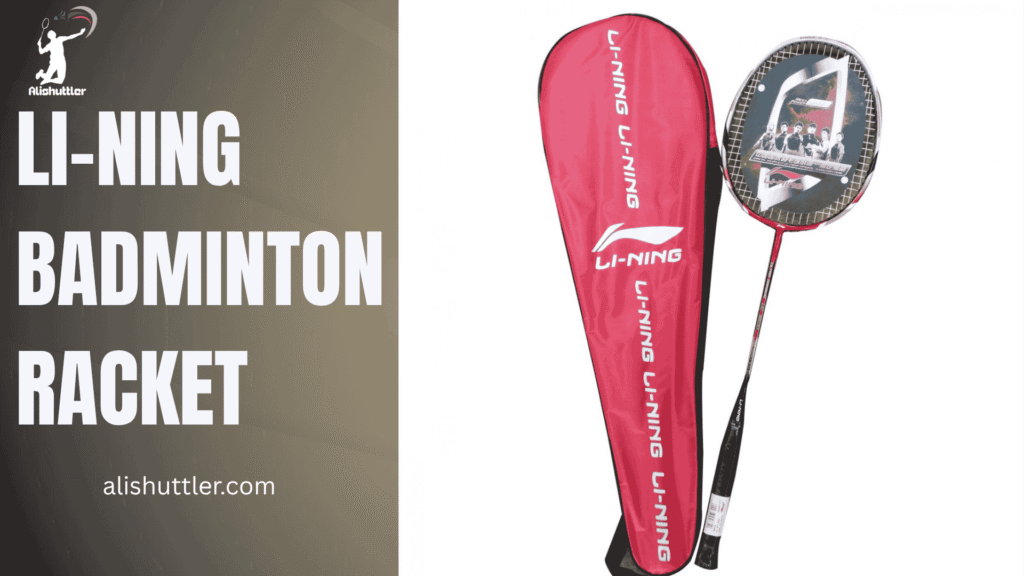
Although not loaded with high-end features, their emphasis on maneuverability and sturdiness makes them an intelligent choice for beginners. Good gear at this level gets kids constructing good habits early.
A racket that’s not too heavy or stiff promotes technique, which is essential for long-term development. The rave reviews typically emphasize how these rackets assist novices in remaining inspired and preventing an early burn out. Windstorm 72 and Wind Lite 700 Models Score High on Value, Comfort.
Mid-Range
Li-Ning mid-range rackets, typically between $150 and $250, are a sweet spot for cost and performance. They typically employ superior components than entry level, with frames that are lighter and more responsive.
Certain models, like the Turbo Charging 75, introduce innovations such as improved shaft flex or better balance for faster swings. This price tier is favored by intermediate players, particularly those transitioning from casual games to regular club play.
These extra bells and whistles allow players to customize their shots and take their game to the next level without a massive commitment. The Aeronaut 6000 is one standout, with its smooth handling and good power.
Club-level player reviews frequently refer to these rackets as what gets you from learning to mastering those advanced skills. Not all players think expensive equals superior. Others discover that mid-range rackets satisfy all of their demands, even for competition.
Professional
Professional-grade Li-Ning rackets are frequently $250+. These models utilize premium materials such as carbon fiber and include slender shafts for increased whip and power.
Signature designs, such as air-stream channels, reduce wind drag and increase speed. The Axforce 90 Dragon Max and Halbertec 7000 differentiate this group.
These rackets are a hit with the advanced players who require ultimate control and rapid reaction in intense matches. Premium features, including tuned balance points and fine-tuned flex, provide the advantage you need when it counts during marathon rallies or rapid-fire volleys.
Others view this tier as an investment in peak performance. This is obvious for top tier players, but not everyone requires or even notices the distinction. For others, these rackets are more of an art form, about personal preference and matching a certain play style.
Choosing the Right Tier
Choose your price tier according to your ability, requirement and frequency of play. Test rackets if you can before buying.
Factor in weight, balance, and comfort. Don’t assume higher price always fits your game.
Player Selection
Choosing the ideal Li-Ning badminton racket involves considering your talent, technique, and the quality badminton equipment available. Elements like grip and maneuverability influence your on-court experience, making it essential to explore Li-Ning’s extensive selection to find the right badminton racket that enhances your abilities.
Beginner
For beginners, friendly rackets rule. Seek out the ones numbered 1, 2 or 3; these are the entry models. These rackets generally come in the 4U (80–84 g) or 5U (75–79 g) weights, so they’re easy and light to swing.
Lightweight rackets reduce arm fatigue and allow beginners to concentrate on mastering the fundamentals. Head-light or even balance types are great choices, as they provide a forgiving swing and don’t place excess strain on the wrist.
Flexible shafts assist beginners as they provide a little extra power to slower swings, helping to blow the shuttlecock over the net. Both the Li-Ning Wind Lite series and the Turbo X 90 series come highly recommended in comfort and user-friendliness, assisting in the development of essential skills all the while making play enjoyable.
Intermediate
As skills develop, players desire rackets that push their game to the next level. Intermediate rackets—typically stamped with a 4, 5 or 6 introduce more control and punch. Most tournament players at this stage do best with medium flexible rackets, which allow them to alternate effortlessly between rapid defense and powerful offense.
Seek out weight classes such as 3U (85–89 g) or 4U. Even balance rackets do well for players who have not yet committed to an attacking or defensive style. They provide a nice balance of speed and power, great for a diverse shot selection.
Price is a more significant consideration here. Striking the right balance between cost and features is crucial. The Li-Ning 3D Calibar 300 and G-Force Superlite series are widely regarded by club players as a solid performer without blowing up their budget.
Advanced
Choosing an advanced player racket is about fitting exact needs. Competitive players should consider rackets that provide precision control, high power, and quick responsiveness. Stiffer shafts and head-heavy (for offense) or head-light (for speed) shaft designs become more pertinent.
Pro rackets are available in 3U or 4U weights for a combination of control and agility. Customization is a big attraction at this stage. Most high-end Li-Ning frames permit grip and string replacements, enabling seasoned players to customize their equipment.
The Li-Ning N90 and Aeronaut 9000 series are professional favorites, providing robust feedback, precise control and the capability to accommodate high-tension strings.
Key Considerations
Three things matter most: weight, balance, and flexibility. Pick your racket’s balance—head-heavy for power, head-light for speed or even for all-around play.
Flexibility also counts—stiffer for advanced, flexible for beginners.
The Li-Ning Feel
Li-Ning badminton rackets are revered for their softer, less stiff frames and distinctive feel, guided by design and input from players of all levels. The brand’s reputation has flourished as casual players and pros alike spread the word with their genuine feedback, building a loyal fanbase around the globe.
Key player feedback is summarized below:
- Most people consider Li-Ning rackets more forgiving, particularly for players who don’t have very strong arms.
- These softer flex provide players with a premium, controlled court feel.
- Tectonic series models are known for their stiffer response, satisfying different preferences.
- Design and frame shapes give them a feel unlike other brands.
- They rave about durability and balance, but a few mention a learning curve for the stiff-racket saved.
Player Feedback
Reviews are divided between those who appreciated the control players and others who preferred the raw power. Lots of folks claim Li-Ning rackets assist with shot precision because of their forgiving flex — softer than most.
This makes them a great choice for finesse players and those with less upper body strength. Durability is a common positive theme, with most models weathering daily play well. A few gripes mention the softer feel not working for power hitters who are accustomed to stiffer rackets.
Regardless, the sleek finish and reliable quality shine in the majority of user reviews. It’s these communal stories that define the brand. Players cite the player-favorite feel and playability of the Tectonic and Windstorm series.
Windstorm models, specifically, are frequently selected by those seeking quick swings and featherweight frames.
Design Evolution
Li-Ning’s design evolution reflects a transition from crude, functional frames to sleeker contours and coatings. Early rackets emphasized basic construction, newer ones leverage intelligent frame chemistry and new materials.
These updates are designed to mix control with pace. Technology has had a big hand. Things like dynamic-optimum frames and high-tech carbon fiber blends are the norm these days.
These refreshes assist gamers obtain more responsive photographs and increased power transfer. The softer flex, favored by many, is a cumulative effect of years of player-driven twerking.
Li-Ning rackets look better now too. Bold colors and clean lines bestow them with a modern edge. Signature innovations, including the Tectonic frame’s stiffness and the Air Stream System, differentiated Li-Ning from competitors, with choices for varying playing styles.
Professional Influence
Pro players have defined how they’re constructed and viewed on the court. Top players collaborate with designers to provide hands-on feedback regarding balance, weight, and feel that informs adjustments in subsequent models.
Elite athlete endorsements enhance credibility of the brand. When pros rock and support Li-Ning gear in major matches, it tells fans it’s trusted and it’s quality.
This increasingly puts the brand on the map in badminton circles worldwide. Star partnerships—including those with Chen Long and other world-class players—help Li-Ning maintain its edge.
These connections keep the company close to the sport’s heart beat and ensure player demands direct new offerings.
Racket Maintenance
Proper maintenance ensures Li-Ning badminton rackets remain in prime condition for consistent performance. Racket Maintenance includes stringing, grip care, storage and cleaning. Each step counts for all-day performance and comfort.
Here’s a checklist with best practices for racket maintenance:
- Rackets should be cleaned with a soft cloth and mild soap to remove dirt.
- Check string tension and quality every couple of months or restring if necessary.
- Keep rackets in a dry, cool place, away from sun and moisture.
- Protect it with a cover or bag to avoid scratches and warping.
- Check and replace grips–make sure grip size fits your requirement.
- Avoid leaving rackets in hot cars or damp spaces.
- Monitor grommet and string wear, replace when fraying creeps in.
- Balance and shaft flex to match player style. Check these during regular maintenance.
Stringing
String tension influences how a racket reacts to every shot. Too tight, and the strings can snap or feel stiff; too loose, and power drops. Most players choose a tension that complements their style of play.
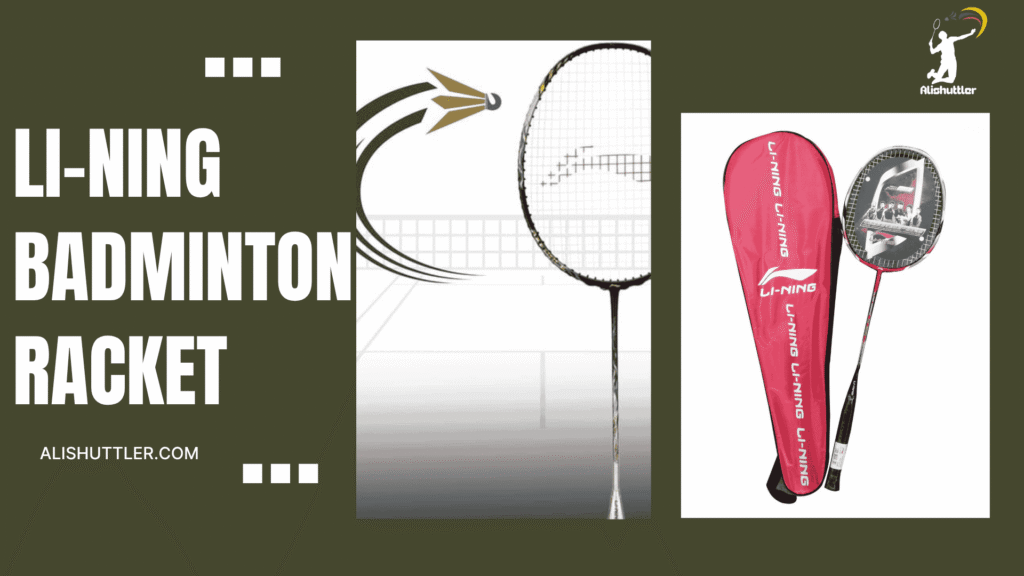
For instance, high tension (over 11 kg) provides control, while lower tension (under 10 kg) assists with power. Techniques matter. Certain folks like a one-piece string job for more even tension, while others prefer 2-piece for more string life and such.
Rely on durable, premium strings for sprinter wear and slick play. It’s wise to restring every 3–6 months if you play frequently, or earlier if you notice fraying near the grommets.
Mistakes to avoid: don’t string too tight for your racket’s frame, and never use old or low-grade strings, as these snap or lose tension fast. Check string pattern matches the racket’s design to prevent uneven tension.
Storage
To maintain your badminton racket, it’s crucial to store it properly to avoid warping or cracking. Keep your rackets in a cool, dry area away from the sun or heaters, as humidity can weaken the glue in the frame and damage the grip. Using Li-Ning badminton rackets bags or padded covers can protect your equipment from scratches and dust, ensuring longevity.
For Li-Ning badminton rackets, consider using a rack or divider within the bag for easy access and to prevent unnecessary impact. Storing rackets either flat or upright, rather than leaning, is essential for preserving their shape and quality.
By following these guidelines, you can ensure your badminton equipment remains in excellent condition, allowing you to focus on improving your game and enjoying your time on the court.
Grip Care
A clean, well-fitted grip makes a difference in control, particularly in long matches. Sweat and dirt accumulate quickly, so clean off the grip after every session with a dry cloth. Change grips every few weeks if you play often, or when it feels slick.
Tacky grips assist with hold, while cushioned varieties aid shock. Material is important synthetic grips are more durable and easy to clean, while cotton feels softer but less durable.
Others prefer overgrips for additional thickness and comfort. If the grip size seems off, change to a more appropriate fit to prevent stress.
Final Thoughts
Li-Ning badminton rackets provide genuine options for every type of player. Each of the series has its own feel and tech, from the feather-like Windstorm to the solid Turbo Charging range. There’s a price and fit for rookies and pros. Grip, weight, and frame shape all alter your play, so choosing the correct one counts.
Proper maintenance keeps the racket in form for extended play. Players worldwide wield these rackets in clubs and on courts. To get the right one for you, consider your style of play and try out a few models if possible. For additional advice or assistance, consult Li-Ning’s own guides or inquire with players at your local club.
Frequently Asked Questions
What are the main technologies used in Li-Ning badminton rackets?
Technologies like Dynamic Optimum Frame, Aerotec-Beam System, and Stabilized Torsion Angle enhance the performance of the ideal badminton racket, providing power, speed, and stability for badminton players.
How do I choose the right Li-Ning racket series for my skill level?
Li-Ning badminton rackets offers a variety of quality badminton equipment for every level. Beginners might opt for the Windstorm or Turbo series, while serious badminton players often gravitate towards the Aeronaut or N90 series for maximum performance and control.
What is the price range for Li-Ning badminton rackets?
Li-Ning badminton rackets range from budget-friendly beginner options to premium professional models, with quality badminton equipment starting around $40 USD and exceeding $200 USD based on advanced technology and materials.
Are Li-Ning rackets suitable for both singles and doubles play?
You bet, Li-Ning badminton rackets are ideal for both singles and doubles players. Lightweight for fast doubles players, while the head heavy design suits singles players needing more power and control.
How should I maintain my Li-Ning badminton racket?
When not in use, keep your badminton racket in a dry location, steer clear of extreme temperatures, and restring consistently. Wipe it down lightly with a soft cloth to get rid of sweat and dust, ensuring durability and smooth performance for badminton players.
What makes the Li-Ning “feel” unique compared to other brands?
Li-Ning badminton rackets feature a comfortable grip, balanced weight distribution, and responsive handling, making them ideal badminton rackets for players seeking a unique mix of power, speed, and control.
Can beginners use high-end Li-Ning badminton rackets?
Newbies can play with top of the line badminton rackets, but it’s optimal to begin with novice versions. These rackets are forgiving and more manageable, making it easier to learn your skills seamlessly.

